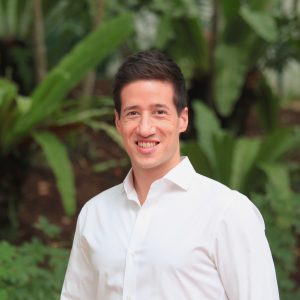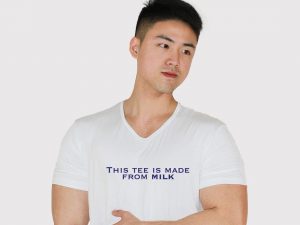On February 7, empty supermarket shelves in Singapore were a common sight. That was the day when the Singapore government raised its Disease Outbreak Response System Condition (DORSCON) level to orange. News of a wave of COVID-19 cases hitting the city-state’s shores led to fears that there may be insufficient food supplies. Singaporeans flocked to supermarkets nationwide in a mass exercise of panic buying. Essential food and household items such as rice and fresh vegetables were out of stock, which exacerbated public anxiety.
To reassure the panicked public, ministers made multiple statements to say the nation’s stockpile of food was adequate. The public’s fears abated until March 16, when Malaysia announced that it will implement a Movement Control Order (MCO), sparking another wave of panic buying as citizens were worried that Singapore’s supply of fresh chicken and fish, among other common Malaysian imports, would be disrupted.
Singapore has a glowing reputation as a food paradise with diverse culinary delights—but this is only maintained by an equally diverse network for food sources. Today, Singapore imports food from 170 countries, which together provide 90% of the food that feeds the Republic’s population. Although food security had only recently found its way into mainstream consciousness, this has been a long-standing issue, considering Singapore’s vulnerability to food scarcity and global supply disruptions.
In response, Grow, the Southeast Asian agrifood tech accelerator launched by venture capital platform AgFunder, kick-started the Singapore Food Bowl program to help regional agrifood tech startups fast track their growth trajectories and commercialize novel technologies specifically relevant to Singapore’s food security agenda. The inaugural cohort consists of 12 participating startups from Singapore, Thailand, the Philippines, Australia, and China. Their specializations cover urban farming, food waste valorization, crop yield improvement, supply chain technologies, “clean meat,” and plant-based protein.
KrASIA recently took a bite into Singapore Food Bowl with John Friedman, the director of AgFunder Asia and Grow Accelerator.

KrASIA (Kr): What is the program outline for startups that are part of Singapore Food Bowl?
John Friedman (JF): Singapore Food Bowl is a 12-week virtual accelerator running from early July to the end of September. Demo day will take place in early October and is likely to be hosted online as well due to current restrictions. The program schedule consists of sessions designed around “Startup Best Practices,” including business model canvassing, fundraising techniques, and pitching, as well as “Industry Insights” delivered by Grow’s network of mentors and industry partners. We will also be holding a “Public Speaker Series” starting in early September, and members of the public are invited to join.
Kr: How is Singapore Food Bowl different from Grow’s previous programs?
JF: For our inaugural program, we took in startups from around the world. It was a physical, in-person program in Singapore. For Singapore Food Bowl, we are conducting a virtual-only program for startups from the APAC region. However, the main difference between Singapore Food Bowl and our original flagship program is the more targeted challenge statement. In this case, it lines up with Singapore’s 30×30 vision of growing enough food in Singapore to meet 30% of nutritional needs by 2030, up from 10% today.
Kr: Was Singapore Food Bowl in the pipeline even before the COVID-19 outbreak?
JF: I would say that the concept and design of Singapore Food Bowl came about in response to the pandemic. Grow had also concluded an inaugural cohort in March just before DORSCON Orange was announced. Had all gone to plan, we would have brought in our second cohort by June. However, once the circuit breaker was imposed, we were forced to ask ourselves, “How are we going to continue running an accelerator when borders are shut?”
At the same time, we saw an increase in the number of conversations around the flaws in our food system as a result of border controls and supply chain disruptions. These are challenges we have been focused on since day one, but are only starting to receive more mainstream attention. We saw Singapore Food Bowl as an opportunity to bring the discussion closer to home and we are considering rolling out this Food Bowl concept to other countries around the region in the future.
Read this: Sandhya Sriram of Shiok Meats on introducing cell-based meat
Kr: Singapore Food Bowl is the first agritech accelerator that is tied to a government’s national policy agenda. Additionally, the city-state government has announced a SGD 30M grant to accelerate local food production and buffer supply disruptions in April 2020. In light of this, what kind of support from the government will the program and participating startups receive?
JF: Grow is proud to be working closely with Enterprise Singapore (ESG) to realize the nation’s 30×30 policy agenda, and we hope our activities will serve as a catalyst for the development of the agrifood tech ecosystem in Singapore and Southeast Asia. Our partners at ESG will be delivering sessions to the startups on the local business landscape, as well as providing up-to-date information about grant opportunities. As an accredited mentor partner of Startup SG, Grow will be able to support first-time founders’ applications for government funding while our relationship as a co-investment partner with Seeds Capital opens up opportunities for later-stage funding as well.
Kr: What does Singapore Food Bowl’s partnership with Dole entail?
JF: We are very excited to have Dole as the lead sponsor of the Singapore Food Bowl program, not only because of the knowledge value that a company like Dole can deliver to our cohort, but fundamentally because we feel the philosophies between our two organizations are very much aligned. Since establishing its partnership with Grow and the Singapore Food Bowl, Dole has made public its promise—a series of commitments for tackling food waste, eliminating processed sugar and plastics, and improving nutrition globally by 2025, and to be carbon-neutral by 2030.
With regards to the Singapore Food Bowl, Dole has selected two startups from the cohort, CocoPallet and Mi Terro, to work closely with. This aligns with the “Dole Promise” of achieving zero food waste on the farm by 2025 and a zero carbon supply chain by 2030. I see the partnership opportunities between our two organizations stretching far beyond the 12 weeks of the Singapore Food Bowl program.

Kr: There are quite a few notable Southeast Asian players in the “clean” and alternative meat vertical, such as Shiok Meats and Karana. It has been suggested that the sudden shift in demand for these alternatives can be attributed to the emergence of zoonotic viruses, like the covornavirus that causes COVID-19, brought on by meat consumption. Do you think this demand is a short-term trend arising from fear or do you expect this to play out as a lifestyle change for the long haul?
JF: No doubt, food safety concerns have been a driving force behind the increase in consumer interest in and demand for alternative meat products. However, there are numerous other catalysts to this trend, from climate change to population growth considerations, all feeding into the broader discussion around the sustainability of our food system.
Whether it’s for environmental, ethical, or personal health reasons, there is enough scientific literature available today supporting a move toward a less animal-heavy diet. That’s not to say one should demand another person to stop eating meat, nor would it be feasible to do so in the context of how our global food system is designed today. But as new production technologies emerge, whether it’s plant-based or cell-based, and new protein products come to market, I hope that consumers would grow more mindful of their behaviors and spending patterns.
Kr: What is your current impression of agritech in Singapore and Southeast Asia at large?
JF: The way we think about agritech in the developed market context—for example, technologies such as geospatial imagery for broadacre farm management or use of autonomous robots in harvesting—is largely inapplicable to the Southeast Asian context of today, let alone Singapore where less than 1% of our land mass is used for agriculture production. However, the conversation around the need for more innovative farming practices is evolving quickly, and we see governments around the region becoming more vocal and supportive of development in this sector. Our food production system as a whole needs to transform, nowhere more urgently than in Asia. A silver lining of the impact of COVID-19 is that more attention has been drawn to the issue and, hopefully, the various stakeholders will become more aligned.

Kr: What do you think needs to be done by these relevant stakeholders so that the agrifood ecosystem can be made more resilient and sustainable? What are the biggest gaps in the ecosystem that require immediate attention?
JF: The biggest gap in my mind is around consumer consciousness. We have become a society focused on and demanding of convenience, which has resulted in an inequitable distribution of resources and, ultimately, the degradation of our environment and personal health. Thankfully, the dialogue and mindset is now shifting. Many key stakeholders in the industry, from corporates to policymakers, are proactively working to improve the outlook. This requires an industry-wide approach to move the needle toward a more resilient and sustainable food system.

